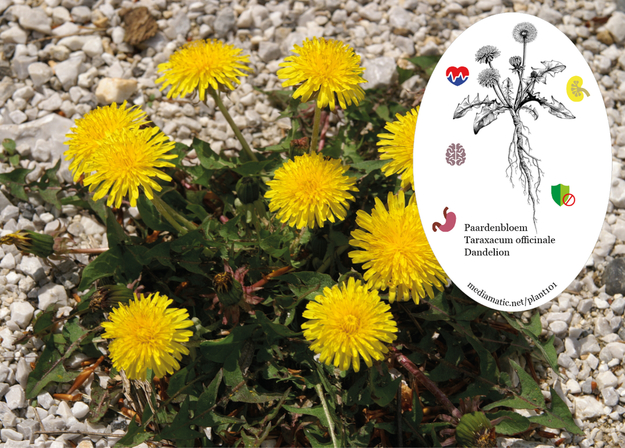The dandelion is a commonly used herbal remedy. It is especially effective and valuable as a diuretic because it contains high levels of potassium salts and therefore can replace the potassium that is lost from the body when diuretics are used. All parts of the plant, but especially the root, are slightly aperient, cholagogue, depurative, strongly diuretic, hepatic, laxative, stomachic and tonic. The root is also experimentally cholagogue, hypoglycaemic and a weak antibiotic against yeast infections. The dried root has a weaker action. The roots can be used fresh or dried and should be harvested in the autumn when 2 years old. The leaves are harvested in the spring when the plant is in flower and can be dried for later use. A tea can be made from the leaves or, more commonly, from the roots. The plant is used internally in the treatment of gall bladder and urinary disorders, gallstones, jaundice, cirrhosis, dyspepsia with constipation, oedema associated with high blood pressure and heart weakness, chronic joint and skin complaints, gout, eczema and acne. The plant has an antibacterial action, inhibiting the growth of Staphylococcus aureus, Pneumococci, Meningococci, Bacillus dysenteriae, B. typhi, C. diphtheriae, Proteus etc. The latex contained in the plant sap can be used to remove corns, warts and verrucae. The latex has a specific action on inflammations of the gall bladder and is also believed to remove stones in the liver. A tea made from the leaves is laxative. The German Commission E Monographs, a therapeutic guide to herbal medicine, approve Taraxacum officinale for dyspepsia, urnary tract infections, liver and gallbladder complaints, appetite loss. Source: https://pfaf.org/
Dandelion
Taraxacum officinale
Find more about this plant on Wikipedia.
